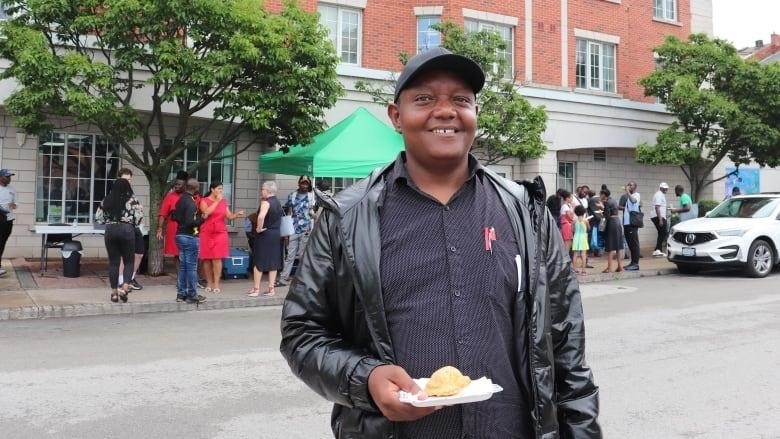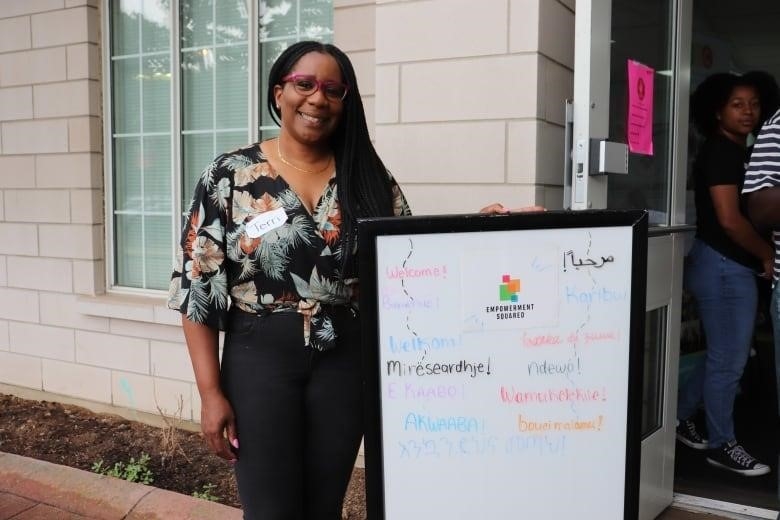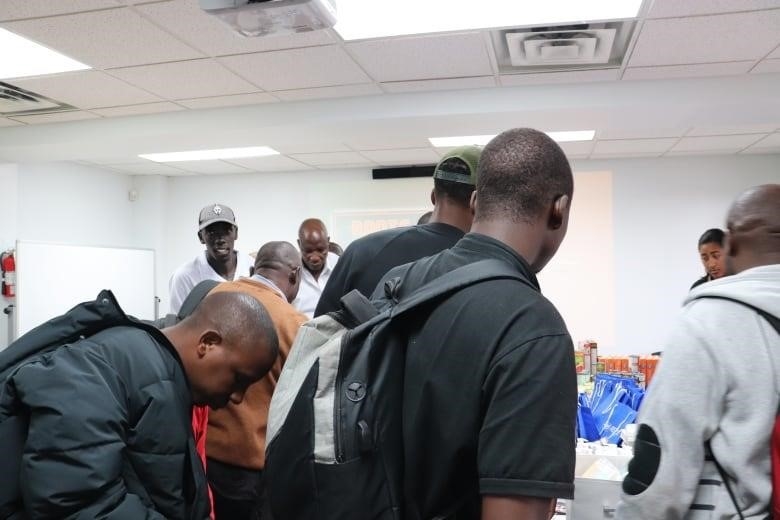
Since October 2022, Hamilton’s men’s shelters have been too full to take any more men
When Cyprin Ontita came to Canada from Kenya a little over a month ago, he said he was “in the dark” about what life would be like as an asylum seeker.
“When you come from Africa, you expect to get a nice place to live. You’ll find a job.He said, “At first, you just don’t know.”
But when he got there, first to Quebec City and then to Toronto, the 37-year-old former youth worker said he had to sleep outside because he couldn’t find a place to stay.
Daniel Wanyeki, 33, who is also from Kenya and is friends with Ontita, said that when he arrived in Toronto in June, he had to sleep outside for two nights because all the shelters were full.
Both of them went to Hamilton hoping that things would get better there.
“Someone said that there might be some room in Hamilton, so that’s why we moved there. “Hamilton is a pretty nice place to live,” he said.
The two are staying at the Good Shepherd, which is one of a number of shelters in the city where refugees and asylum seekers are looking for a place to stay.
One fifth of shelter beds in Hamilton are currently being used by refugees and asylum seekers. This led Mayor Andrea Horwath to say that the system is “at risk of collapse” and ask the federal government for $9 million to help fix the problem.
Putting together agencies and service
The director of operations for Refuge: Hamilton Centre for Newcomers Health, Terri Bedminster, told CBC Hamilton on Thursday that there has been a “surge” of people claiming to be refugees or looking for asylum in Hamilton.
A representative from Immigration, Refugees, and Citizenship Canada said, “The phone has been ringing more often at our Hamilton office in the last few weeks.”

Bedminster said that many asylum seekers first come to Toronto, where shelters are full and where an average of 273 people were turned away every night in June. After that, they come to Hamilton.
She said that the newcomers think that “there may be more help here and there are shelters,” but that’s not true. Our shelter system is already full.
On Thursday, Bedminster and more than a dozen other local groups met at the downtown office of a local group called Empowerment Squared to talk about support services for newcomers to Hamilton.
“This was a way to get all the agencies and services together so we could better coordinate helping people, especially those from Kenya and Uganda,” she said, adding that groups were planning to meet with Mexican immigrants later in the day.
Agencies like the YWCA, the Centre de santé communautaire Hamilton Niagara, the Hamilton Community Legal Clinic, and the Hamilton Centre for Civic Inclusion, among others, set up booths to give newcomers information. People in the community also gave hot meals, toiletries, and food.
“We thought of a community response to help support the community,” Bedminster said.
Based on the latest information from the city, the men’s shelter system has been full since October 2022. Shelters for women, victims of domestic violence, and families have also had trouble finding enough free beds.
On Thursday, Hamilton Centre MP Matthew Green backed Horwath’s request for funding and asked the new Minister of Immigration, Refugees, and Citizenship, Marc Miller, to help asylum seekers and refugee claimants find housing and shelter space.
“When we invite people to live in our country, we need to make sure their basic needs are met. “Hamilton is doing its part, and now it’s up to the federal government to do its part,” he said in the letter.
The federal Ministry of Immigration, Refugees, and Citizenship’s press secretary, Bahoz Dara Aziz, said in an email earlier this week that housing and help for asylum seekers are “the responsibility of provinces and municipalities.”
The email said that the federal government had already announced $212 million on July 18 to help house asylum seekers.
People who want asylum because of violence or discriminatio
Bedminster said that there isn’t just one reason for the rise in asylum seekers and refugee claimants, but that laws that are unfair, violence, and climate change are some of the reasons.
Ontita said that he thinks most of the people who are leaving Kenya are doing so because they fear for their lives.”Most of us here, if it’s not because of gender, it’s because of politics,” he said.

Susan Toth, who works at the Hamilton YWCA as an intake worker, said that the YWCA’s Speqtrum program helps LGBTQ2+ newcomers. She said that the large number of people seeking asylum in Hamilton could be caused by countries that don’t give LGBTQ2+ people as many rights.
She said, “They come here to feel safe, to be accepted, and to know that it’s okay to be who they are.”
“There is a huge, huge need for people who work.
Wanyeki says he has a degree in tourism management and used to work as a banker. He said he is working on getting his Ontario driver’s license and wants to work as a truck driver, which is a field with a shortage of workers right now.
Maria Antelo, who works at the Hamilton Community Legal Clinic, said that people in Hamilton should show support for newcomers.
“They’re not here to make our housing shortage even worse. Canada also has a huge need for people who can work. So let’s open our arms to refugees. “Let’s be the kind of neighborhood we’re meant to be,” she said.
Ontita said he would like to thank the staff at the Good Shepherd for letting him and Wanyeki stay there while they figure out their paperwork and look for work.
“They took us in no matter who we were or where we came from, and I can’t thank them enough. He said, “I just have to give something back to the community someday.”
